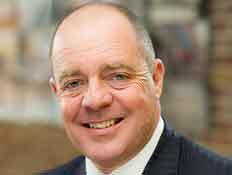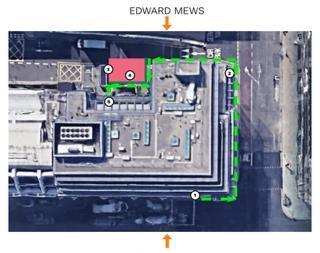Congratulations to everyone who has prospered in a rollercoaster year for London’s residential property market - it’s been an eventful but ultimately fruitful 2015.

So much has happened in the past 12 months. Today I’m going to pick out what I see as the key moments, share some key CBRE research on 2015 and make some forecasts for the year ahead as well.
When I cast my mind back to December 2014, the biggest talking point was the threat that Labour or the Liberal Democrats would introduce a mansion tax. While 2015 got off to a strong start, the shadow of a mansion tax grew as we approached the election, with the Conservatives only given a 7% chance of an outright victory on the morning of 7 May.
When I woke at 5am to the shock result on the morning of the election, I knew it would be a busy few weeks for the CBRE team as the uncertainty was put to an end.
We saw a surge in activity among buyers of homes worth up to £1m, with the Conservatives’ renewed determination to pursue Help to Buy also giving the market a summer lift.
However, as we approached autumn it became clear that sales above £1.5m were slowing, having been gradually eroded by rises at the highest levels of stamp duty. This tax is affecting the second-homes market more than new homes, which retain their allure for UK and international buyers, but the rise in stamp duty was compounded in the chancellor’s Autumn Statement last month.
Adding a further 3% for buy-to-let investors only increases the danger that people will begin to think the government has more nasty surprises in store, dissuading them from buying. It’s an old property mantra that too many surprises create uncertainty.
Unforeseen consequences
The dangers were pointed out by Residential Land founder Bruce Ritchie in Property Week (20.11.15, p14) when he noted that the unforeseen consequences of stamp duty rises include choking off affordable supply financed by the most expensive homes.
Overall it’s been a strong year for the London market, with average house price growth of 7% and new-build construction at its highest rate since the recession. The year has been mainly characterised by a ‘ripple’ effect towards outer London.
According to CBRE’s ‘Hot 100’ research, the best-performing locations in terms of sales growth in London in 2015 have been: Newham (16%); Hillingdon (13%); Havering (12%); Harrow (12%); Enfield (12%); Barking & Dagenham (12%); Bexley (11%); Redbridge (11%); Croydon (11%); and Greenwich (10%).
To further study the ‘ripple’ out, we have assessed the most expensive and most affordable commuter towns, based on an equation matching travel costs with average yearly mortgage repayments. On this basis, our five commuter towns most in demand are Beaconsfield, Gerrards Cross, Esher, Harpenden and Radlett. Our five most affordable commuter towns are Tilbury, Newport, Grays, Chatham and Ashford.
Homes - particularly near transport hubs - have continued to perform well, and it is for this reason that we are predicting 3% house price growth for central London and 5% for Greater London overall in 2016.
This year, we are likely to end up with 2% growth in central London - partly due to the effects of stamp duty rises at the top end - and 9% in Greater London.
Reflecting the strength of locations with good transport links, with Crossrail getting ever closer, my hot tips for 2016 are the areas around Tottenham Court Road and North Greenwich. Don’t forget, the latter is only one stop from Canary Wharf’s Crossrail station.
Canary Wharf itself, the South Bank and Wapping are also likely to fare well in 2016, with more completed developments driving further price growth at a time when London’s demographics simply have to drive prices up.
On the political front, the mayoral election will be crucial in setting the future direction of London’s housing market.
In my role as vice-chair of the London Chamber of Commerce & Industry’s Property & Construction Group, I witness first hand the strain that a lack of construction skills is putting on the development pipeline.
It is also crucial for the government to release unused public sector land and undeveloped brownfield sites, and to do as much as possible to help small housebuilders develop small sites. The housing crisis needs both big-picture and granular solutions.
My final forecast for 2016 is that we will see a bigger impact from the government’s spring 2015 pension reforms. The reforms affect 4.5 million people with defined-contribution schemes, and allow anyone to access 25% of their pension pots as a tax-free lump sum from the age of 55. Much of that money is bound to find its way into property.
Fears of a bubble in the London housing market have now subsided, and we are in a more sustainable market. With new government support for starter homes as well, 2016 should be a successful year.
Mark Collins is chairman of CBRE Residential UK






























No comments yet